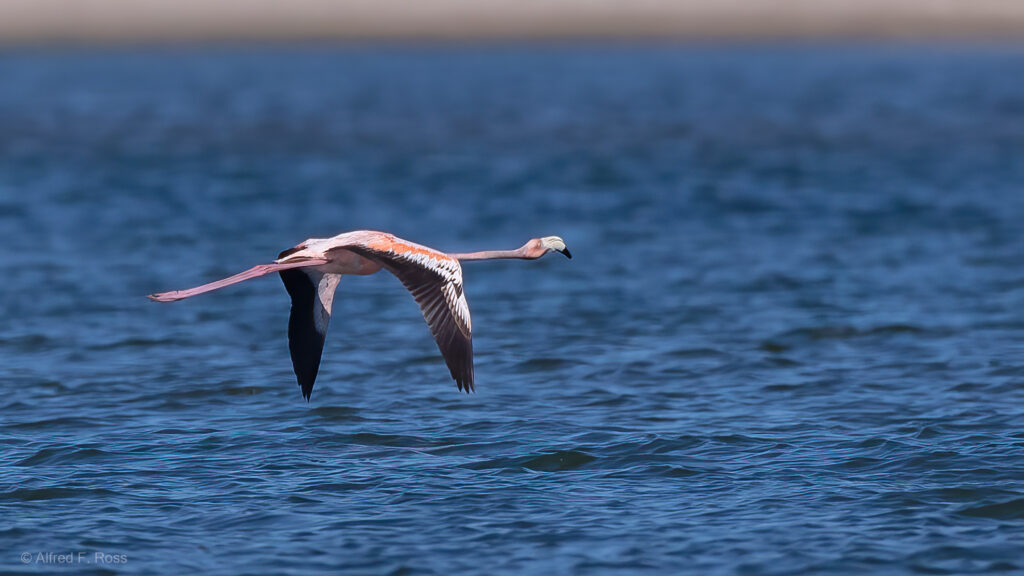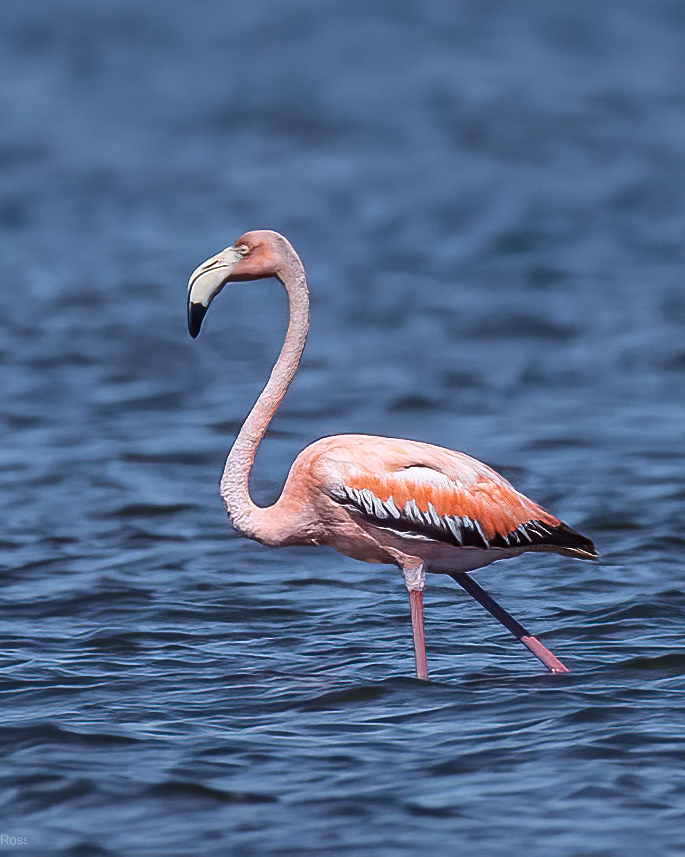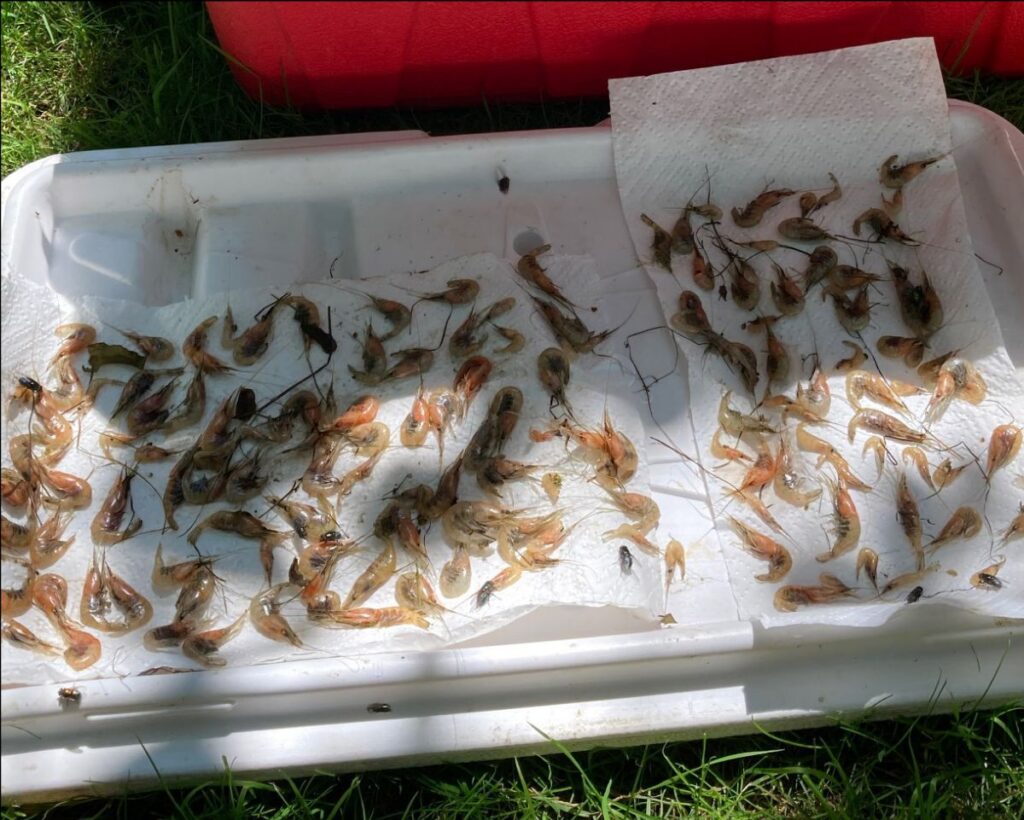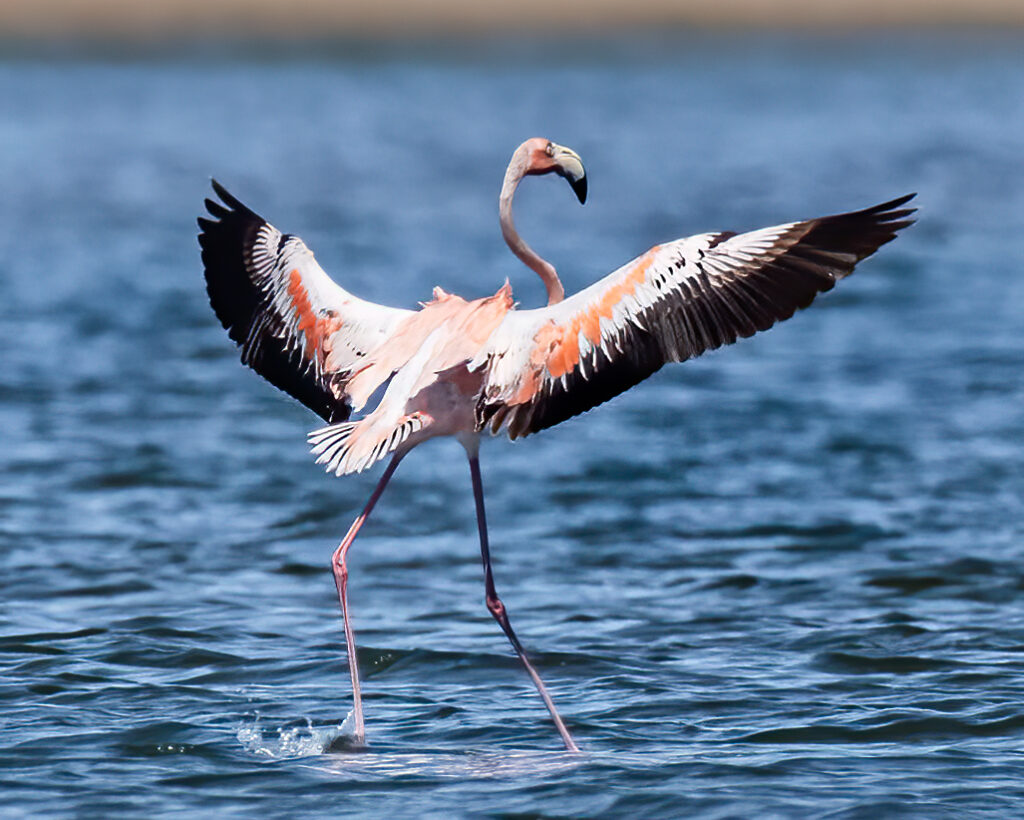
There was much excitement when an American Flamingo, Phoenicopterus ruber, appeared on Georgica Pond in late May. Normally found from Florida to the West Indies, this individual bird was way out of range and is believed to be the first sighting of a flamingo in the wild in New York. The wide expanse and shallow water at the southern end of Georgica Pond must have reminded it of salt flats in the Caribbean. Apparently, it tried out Cape Cod, but preferring East Hampton, it returned. We hope the flamingo recognized the improved water quality at Georgica Pond.
What a treat for those lucky enough to have seen our unusual visitor! With stories in the New York Times, The Post, The East Hampton Star and The East Hampton Press, this flamingo attracted more press than when President Bill Clinton stayed at the pond. Hundreds of birders from all over came to see it.

The American Flamingo is an unmistakable bird with its 60 inch wing span, skinny, skinny pink legs and large, black-tipped bill. The Barbie of the bird world—it is gorgeous, unique and somewhat comical. Flamingos feed using their large bill to comb the mud for invertebrates. The shrimp they eat give them their wild pink color and lest you think there are no shrimp in Georgica Pond—think again. At least one species of shrimp, the grass shrimp, Palaemontes pugio, has been recorded at the pond. Flamingos are also reported to eat crabs, of which there are plenty.

There is much speculation about how the flamingo arrived at Georgica Pond. One local editor questioned whether it had escaped from a billionaire’s menagerie. More likely it was blown off course by a hurricane and flew north. This phenomenon is well documented in the bird world and these birds are referred to as “accidentals”. Sometimes accidentals stay for a short visit; other times, they stay for good. Flamingos can fly at upwards of 40 mph during long distance flights.
What will happen to the Georgica Pond flamingo? Although its legs are very long, it is unlikely it will continue to enjoy wading in the pond once the pond starts filling up for the summer, but we really don’t know. Water levels are rising daily.
We are not suggesting the flamingo is here to stay, but with climate change manifesting itself all around us, don’t be surprised if we see more southern birds and wildlife at the pond in the future.

All photos by Alfred Ross, unless otherwise noted.
